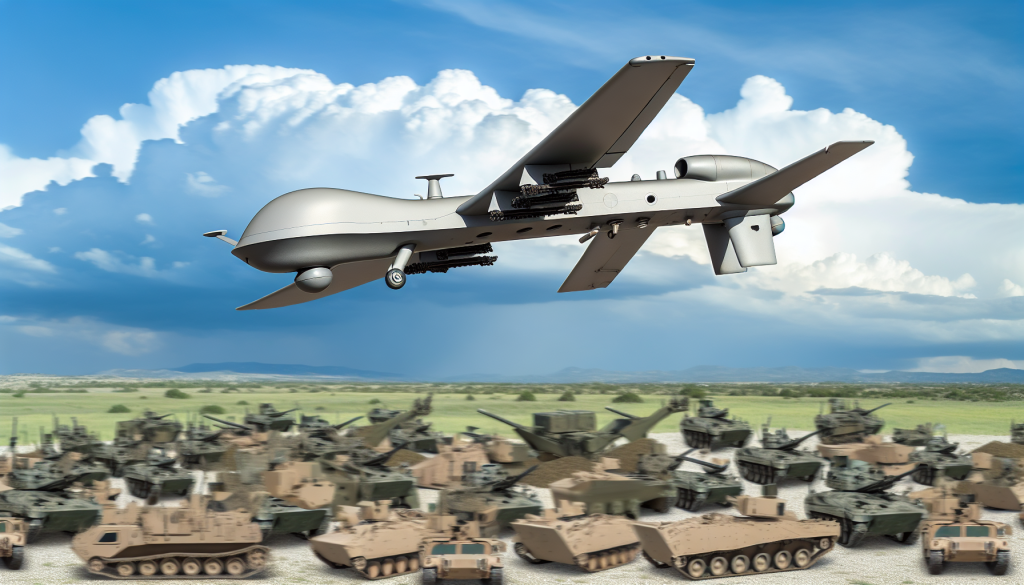U.S. Department of State Updates Military Drone Export Review Policy
On September 15, 2025, the U.S. Department of State announced a significant shift in its military drone export review policy. This update is poised to align the review of advanced unmanned aerial systems (UAS) more closely with that of crewed aircraft rather than the more stringent regulations applied to missile systems. This shift has intricate implications for military exports and international relations.
Policy Shift: Drones Reviewed Like Fighter Jets, Not Missiles
The State Department’s change indicates that requests to export UAS will now be considered in a manner akin to that of exports of crewed fighter aircraft, departing from the longstanding application of the Missile Technology Control Regime (MTCR). Previously, large, weaponizable drones were subjected to a strong presumption against transfer due to their capabilities, which raised concerns over proliferation. The shift could accelerate the export process for military drones, such as those resembling the “Reaper” systems, making sales to allied foreign nations less cumbersome.
Background: The MTCR and Export Control Laws
Defense articles are traditionally controlled under the International Traffic in Arms Regulations (ITAR), overseen by the State’s Directorate of Defense Trade Controls. This control mechanism includes the U.S. government’s Foreign Military Sales (FMS) channel, which exempts certain transactions from ITAR licensing. While MTCR functions as a cooperative framework among member states to govern exports, it is not directly enforceable on exporters. The guidelines within this regime have historically mandated rigorous reviews and often threatened denial for transfers of highly controlled military technology, complicating exports of certain UAS.
Effort to Streamline FMS and Enhance U.S. Competitiveness
The pivot in policy seems designed to streamline the sale of U.S. military drones to allied nations via the FMS channel. By reducing bureaucratic delays, the U.S. aims to enhance its competitive edge in the global arms market, particularly against burgeoning competitors like Israel, China, and Turkey. This initiative aligns with broader efforts initiated by the Trump administration to reform FMS processes, a move highlighted in an executive order from April 2025.
Scope and Coverage: Focus on Large, Armed UAS
While specific models for the new review process have not been detailed, it is anticipated that the policy primarily concerns large, armed military drones capable of extended operations and significant payloads. Reports suggest that UAS designed to incorporate defense articles, especially those meeting specific technical thresholds, will fall under this new geopolitical paradigm. However, it’s important to note that this policy change does not alter existing U.S. Munitions List (USML) controls, nor does it extend to non-military UAS, which remain under the jurisdiction of the U.S. Department of Commerce.
Continued Safeguards: Nonproliferation, Human Rights, and Oversight
Despite the more lenient export framework, the policy mandates that all transfers undergo meticulous case-by-case review per the U.S. Conventional Arms Transfer (CAT) Policy. This ensures that critical factors such as national security, human rights, and regional stability remain focal points in the decision-making process. The historical journey towards maintaining oversight in arms transfers serves as a reminder of the delicate balance between operational efficiency and ethical responsibility.
Geopolitical and Market Implications
This updated policy may serve to bolster sales to U.S. partners, consequently enhancing their intelligence, surveillance, and reconnaissance (ISR) capabilities. In a landscape where NATO allies are increasingly confronted with drone threats, the U.S. aims to support their modernized defense efforts. Additionally, the changes may lead to greater interoperability among allied forces, facilitating training and establishing accountability for operational uses.
Implementation and Open Questions
While the overarching goals of the new policy are clear, there are several unresolved elements concerning implementation. These include the specific technical parameters for eligible systems and the handling of any necessary subsystems. Moreover, as U.S. policies evolve, the response from MTCR partners and other nations will play a crucial role in determining the future landscape of nonproliferation.
Through this significant policy update, the State Department seeks to promote faster, more reliable military drone exports, ensuring that the fundamental tenets of nonproliferation and human rights continue to underpin these transactions. As the implementation of this policy unfolds, the implications for both U.S. defense strategy and the global arms market will undoubtedly emerge further into public view.

